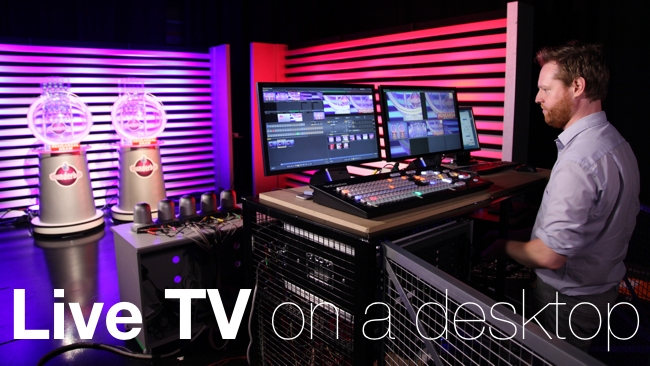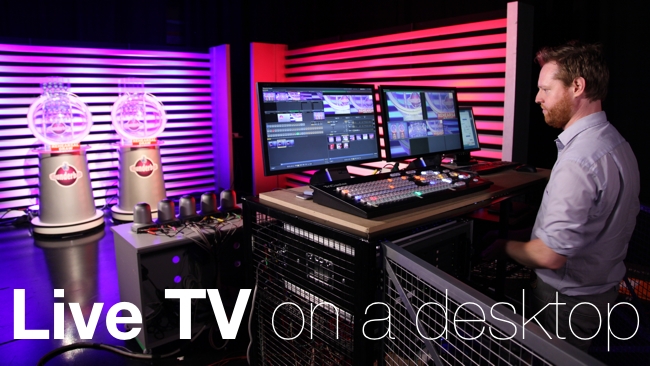
 Tricaster and the national lottery
Tricaster and the national lottery
While the rest of the world moves inexorably towards downloading shows that are available on demand, live television still has a vital place in the entertainment repertoire
Technology seems to get more powerful, but paradoxically it also gets cheaper and smaller, which means that what happened thirty years ago with Desktop Publishing, in a loose analogy, is now changing how we produce live television.
NewTek's TriCaster has been around long enough that most of us have seen their amazing demonstrations at trade shows around the globe. And although the idea of the system - that you can produce a high-end professional-looking show with a computer and some controllers that sit on your desk - hasn't changed, NewTek has been continually adding functionality to their systems so that, now, they are almost unbelievably clever.
And while it is true that you might only want to show off everything at once in a trade show demo, what this all means is that the system is now so powerful, that it is easily up to the rigours of producing a live, national TV broadcast, brimming with automated flourishes that convince the audience they're watching something special.
Billions
The National Lottery in the UK still seems like a new idea but it's been around for two decades. In that time, billions have been raised and donated to (mostly!) deserving causes. It's an important part of the UK economy, as - like so many other countries - it struggles to deal with its debt burden while still funding projects that make life across all sectors of society just a bit better.
At the end of 2012 the UK National Lottery operator Camelot, in partnership with the BBC, decided to refresh the way in which the lottery draws were presented, televising only the flagship Saturday evening draw show and moving the rest of the weekday results to an online-only format for Camelot’s YouTube channel, website and social media outlets (a move which reflects the growing ubiquity of YouTube rather lack of interest in the draws themselves).
The new online show format, shot and produced at Pinewood Studios and produced by Initial Endemol, is made using a TriCaster live production system.
As you can see from the video below, the TriCaster's automation means that the complex-looking show is actually simpler to produce, and, of course, compared to the "traditional" cost of setting up a show like this, is much more affordable.
The Tricaster was given the gig because, after a rigorous review process it was found to be the best standalone live production system by the Camelot and Pinewood.
It's been in use since January 2013 and has been used to produce five online results shows per week.
Automated graphics
For the studio-based Lotto and Thunderball shows, five Panasonic HE60 remote head cameras are pre-set to capture wide shots and close-ups of the lottery machines and the numbered balls as they are drawn. These locked off feeds are then sent to the TriCaster. A PC-based graphics system linked to the ball machines and the TriCaster automatically produces a graphic for each ball and triggers the correct voice-over to announce which ball has been drawn. An operator vision-mixes the camera feeds and graphics, and then creates a second pass to add additional sound bites before preparing the file for export and upload to YouTube.
The results show is uploaded approximately an hour after the draw, and is subsequently embedded into the National Lottery website and social media sites.
Chris Jones, Senior Producer, Initial Endemol, explains: “The YouTube feed is a one-off continuous as-live presentation – we wanted to make it as quick as possible rather than building a slow process with an edit. Having the TriCaster has enabled us to create as near to a finished product as possible in one pass.”
More and more businesses are becoming broadcasters, and as they realise that video is one of the best ways to get their message across, desktop live production is set to be a major area for growth.
Tags: Production


Comments